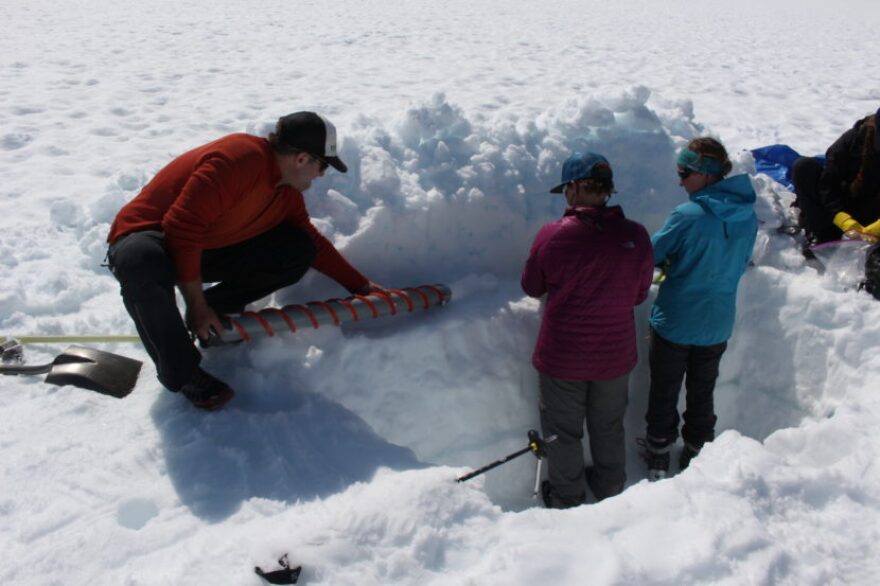Out on the glimmering white expanse of the Juneau ice field, a group of students and scientists work an assembly line of sorts.
It begins with Shad O’Neel, a glaciologist with the United States Geological Survey, who twists a metal tube into the snow and ice to take a core sample.
So you spin it down, it drills its way in, you turn it backwards, catch the snow, you pull it out and hope there’s something inside,” he said.
Scientists are wondering whether the carbon released from interior fires is traveling all the way to Juneau — potentially speeding up glacial melt.
Wildfires are increasing in Alaska, a trend which has largely been attributed to climate change, e.g. less snow cover can mean a longer wildfire season.
The Southeast part of the state typically doesn’t have to worry about fires. It’s a rainforest afterall, but smoke can travel.
Glaciers will document that journey and more, said Natalie Kehrwald, a USGS research geologist from Colorado.
“So it will tell you if it was colder, it will tell you if it was windier, if there was a lot of pollution during that time,” she said.
And it will reveal whether carbon from wildfires winds up on the ice.
“The glacier surface itself is basically layer upon layer of those snapshots in time,” she said.
Kehrwald wonders whether an increase in interior wildfires is spreading fine amounts of dark carbon on the Juneau ice field — which could accelerate glacial melt.
That phenomenon has been documented on the ice in Greenland, she said, after smoke from wildfires in Western Canada swept across North America.
Kehrwald leads the team on the ice field to collect the coring samples to see if the same thing is happening in Juneau.
Shad O’Neel pulls up the metal tube:
“So, we’ll just sort of jiggle it a little bit and it get it to come out,” O’Neel said.
He releases a nearly perfect cylinder of snow and ice that’s a couple feet long.
From there, a group of students from the Juneau Icefield Research Program slice it into sections, weigh it and eventually smash it to pieces with a mallet.
They will write down what section the sample belongs to, the deepest part being the oldest. The melted pieces will be sent to Dartmouth College, South Dakota State University and the USGS in Colorado, among other places, to test what the temperature was when the snow fell and what traces of fire could be in the ice.
Sarah Fortner will take some of the samples back to Wittenberg University, where she teaches geology. In the science community, the trickle down consequences of climate change is on everyone’s mind, she said. Ice cores from glaciers around the world have been telling a sad story.
“That’s one of the ways that we know that climate change is happening and that it’s related to our greenhouse gas productions,” Fortner said. “Because ice cores have preserved that record of increased greenhouse gasses all around the world.”
Scientists hope to determine if fire is affecting Juneau’s ice later this year.


